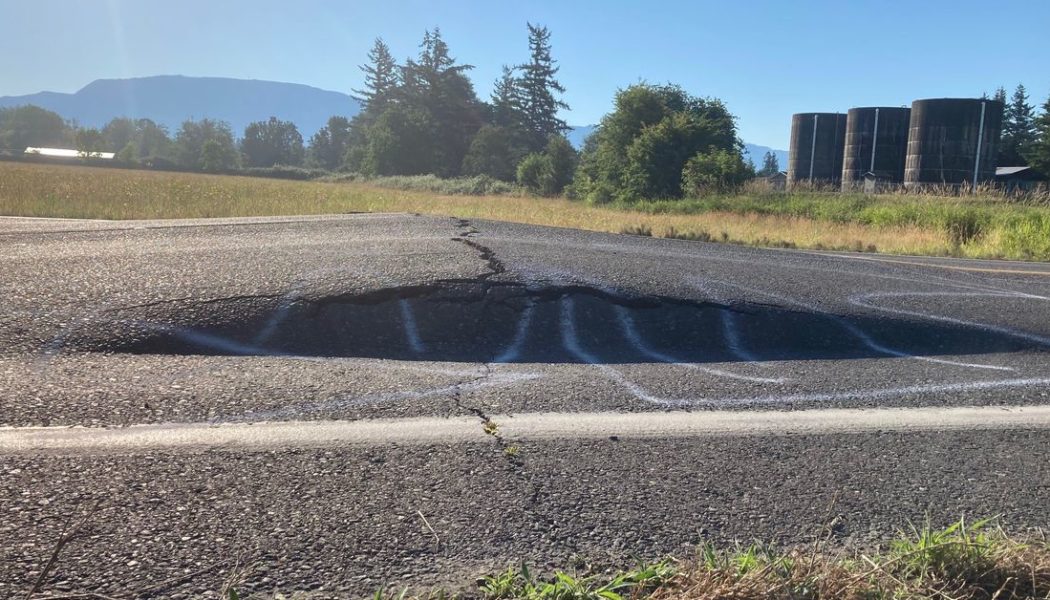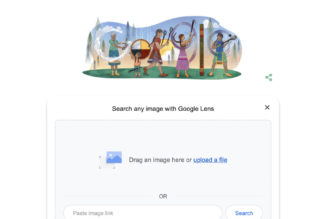
During last weekend’s deadly heat wave, some roads in the Pacific Northwest buckled. Workers ventured out in blistering conditions to put cracked concrete and asphalt byways back together. Steel drawbridges were doused with water to make sure they wouldn’t swell shut under the oppressive heat.
The heat dome that sat over the region provided a brutal stress test of its roadways, some of which couldn’t withstand multiple days of record-breaking temperatures. It’s something that’s happened before, in Washington, Wisconsin, South Dakota, and anywhere else experiencing extreme heatwaves.
Here’s an example of how heat is causing some road pavement to buckle. Our crews are hard at work this morning fixing SR 544 in Whatcom County, trying to get it back open by afternoon. https://t.co/53XoBDBOMZ
— WSDOT Traffic (@wsdot_traffic) June 28, 2021
“You can design something to work in a very hot temperature or not. That’s not the problem.” Steve Muench, a professor of civil engineering at the University of Washington says. The problem is that the current heat defies engineering expectations. Fixing that bigger problem will take engineering, planning, and a whole lot of public willpower.
Why can’t these roads handle the heat?
Different kinds of roads behave very differently under heat. In the US, roads are typically made of one of two materials — asphalt or concrete.
Concrete roads, Muench says, are generally made of portland cement. To make something like a highway, it gets formed into big slabs, which can be about 15 feet long and four feet wide. As temperatures fluctuate, these big slabs of concrete expand and contract. (How much they expand or contract is usually determined by what kinds of crushed rocks make up the cement.)
All that is normal. Usually, there’s just enough space in between the slabs so that the expansion (in hot weather) and contraction (in colder weather) passes completely unnoticed by the average driver. But when it gets unseasonably hot, some of those slabs of concrete start running out of elbow room, especially if bits of sand or other debris have gotten into the cracks between the slabs.
Heat = expansion. Here’s a look at a concrete panel that popped up on NB I-5 at I-405 in Tukwila. Crews are removing the damaged panel and filling it back in. No estimated time for getting these lanes and ramp back open. Fortunately, not much of a backup at the moment. pic.twitter.com/OLd1Ewf6Kt
— WSDOT Traffic (@wsdot_traffic) June 28, 2021
“When it gets really, really abnormally hot, like it hasn’t been that hot before in quite a long time, it expands so much that it runs into the adjacent slab. There’s no more room to expand, they just push up against each other and then they pop up” Muench says.
Asphalt is a different beast entirely. “Asphalt is a viscoelastic material, which is temperature-dependent. So, the hotter it is, the more fluid-like it is,” Muench says. If it gets hot enough, some asphalt roads can become soft or deform like Play-Doh, forming ruts when cars and trucks drive over them.
Both asphalt and concrete roads can be designed to withstand heat. “We already know how to adjust materials to behave in hotter places,” Muench says. “That’s why Phoenix isn’t falling apart — it’s not Armageddon there because it’s hotter.”
The problem is that when some of these roads in Washington state were being designed, using those materials or design techniques would have been overkill — the area doesn’t normally get as hot as Phoenix, so there was no need to build with extreme heat in mind. Now, that calculus might be changing.
Preparing for a future that looks nothing like the past
When engineers design roads, they can look at the historical weather records for an area and figure out what’s normal. How much rain does this place get? What are the extremes of heat or cold? What are the chances that the nearby river will flood in the next 50 years? All that information can inform which materials and designs the engineers pick out. But it might not be enough anymore.
“With climate change, you’d have to think very carefully about that and go: ‘Should I really be designing something based on information in the past which may no longer be relevant? Or should I design it based on what we project for the future?’” Muench says.
Roads last for a long time, so building for the future starts to make a lot of sense. Engineers can use climate models to predict how things might change over time and build for a future that’s hotter, or wetter, or drier than anything seen in the weather records of the past.
Even roads developed based on those models won’t be perfect. “You can’t design for everything. Some things just break your infrastructure,” Muench says. When a massive storm or an earthquake or any other disaster hits, some things will break, no matter how well-designed they are. At that point, Muench says, the question becomes how do you recover from that quickly. That requires different sets of resources and planning, like making sure materials are available and workforces are trained to respond immediately. Those contingency plans are vital during major disasters so that when the worst happens, a community is ready to face it.
Building for the future and prepping for future emergencies are both possible. We have the information and the technology to make it happen. The bigger question, Muench says, is whether people are willing to put the money and resources into infrastructure that can withstand the coming storms, both literal and figurative. “I kind of hope that we’re kind of crossing that bridge — no pun intended — to where we might be willing to spend a little effort, time and money on these kinds of things,” Muench says.
As it is, many transit departments across the country have dealt with shrinking budgets as they try to hold together aging infrastructure that was built for a different climate. Future planning is important but often takes a backseat to more immediate concerns, like tending to heat-stressed roads as they buckle. Crews go out, repair the concrete slabs or asphalt, and get traffic flowing again. It’s not a permanent fix.
“It’s just sort of wait for something to break and then fix it when it breaks,” Muench says. “The bigger solution is trying to get ahead of the curve and think about what’s coming in the future.”










